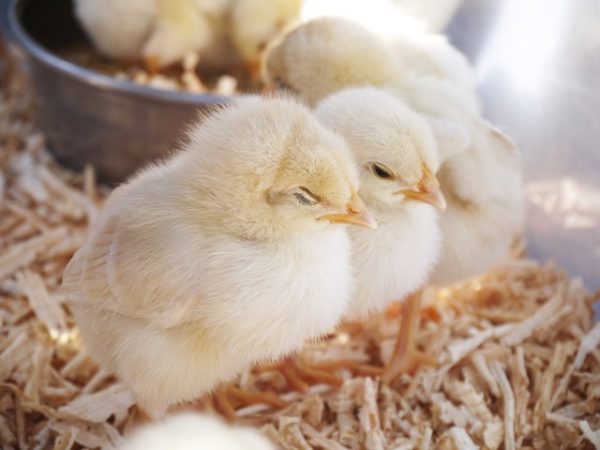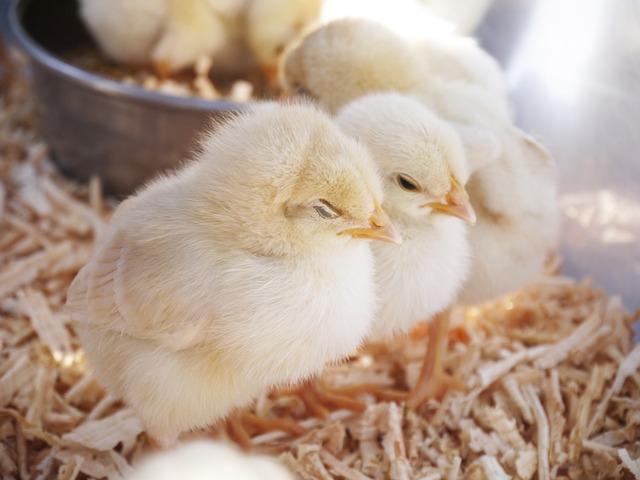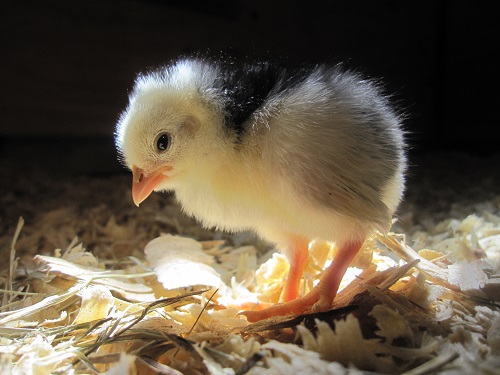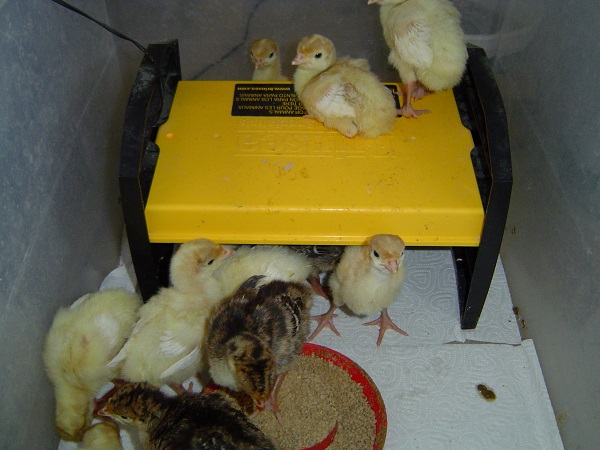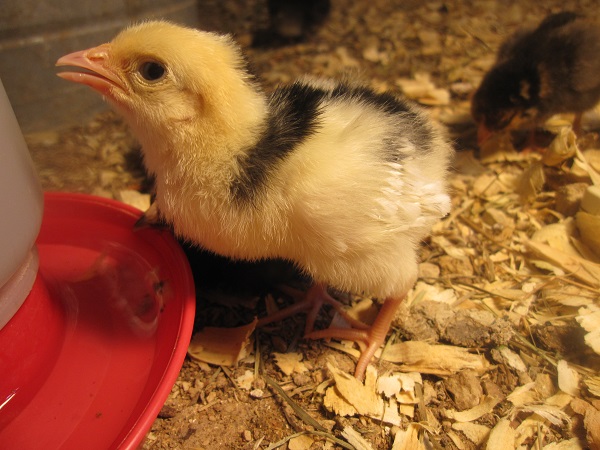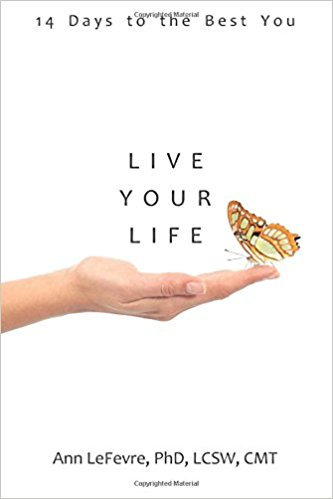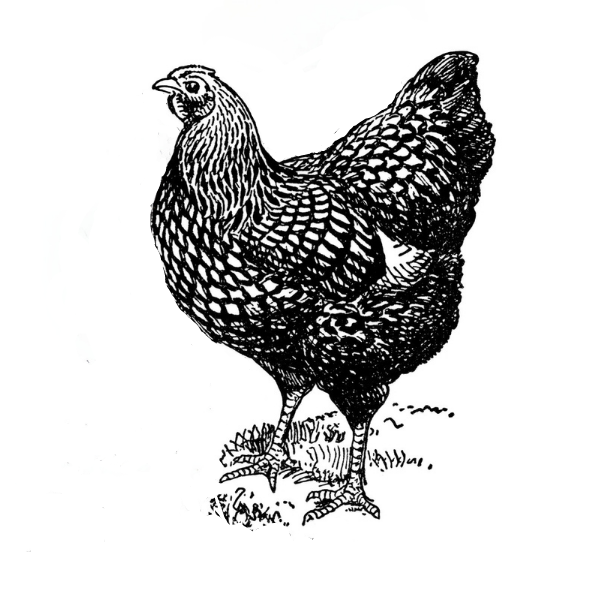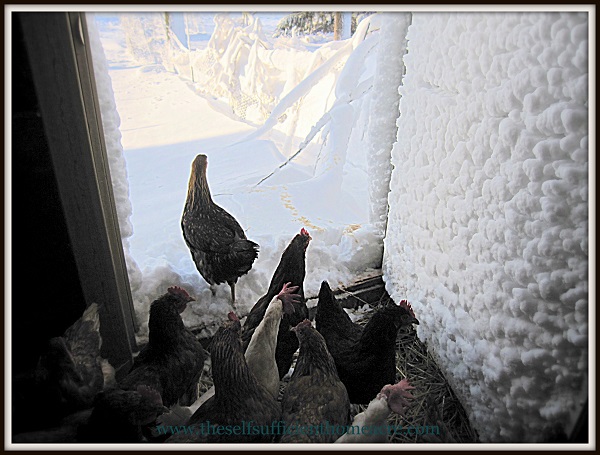Set Up A Brooder Box For Chicks
Setting up a brooder box is the first step in providing a safe and healthy home for your day-old poultry. Chicks, ducklings, goslings, and turkey poults require the same basic setup for their first few days, although ducklings and goslings are larger and need a bit more space.
So what do your little balls of fluff need when they first arrive?
- Safe, clean enclosure
- Warmth
- Food
- Water
- Probiotics
Keep reading for a closer look at each of their basic needs!
Check out How to Raise Backyard Chickens for Eggs: Getting Started with Laying Hens ebook and Companion Workbook & Planner on Etsy!
This post contains affiliate links or advertisements. You won’t pay extra but I may earn a small commission if you purchase products through those links. Thank you for supporting The Self Sufficient HomeAcre!

Setting Up Your Brooder Box
To give your chicks, ducklings, and poults the best start in life, provide a brooder box that is warm, safe, and clean, and gives them enough room to stretch their legs and wings.
Brooder Box
You may use a plastic storage bin, wooden box, or another container to house your baby poultry. Make sure it is easy to clean, provides ample space for them to move about, and the sides are high enough to prevent escape (at least 12″ high for the first week). If possible, use a screen to cover the brooder. This will allow airflow and keep chicks safe.
I have read that it is best to provide a round enclosure to prevent chicks from piling up in corners and suffocating the ones on the bottom. In my experience, this is not necessary as long as chicks are kept at the proper temperature and are not under stress or over-crowded.
As an Amazon Associate, I earn from qualifying purchases.
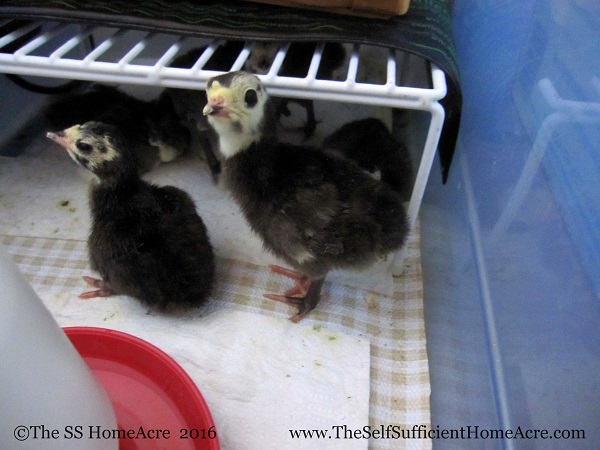
Keep Them Warm & Give Them Space
Be sure that young poultry have room to move in and out of heated areas to regulate their own temperature. If they pile up under the heat, they are too cold. If they are as far from the heat as possible and are panting, they are too warm. Make sure there are no drafts to chill them.
Provide A Clean, Non-slip Surface
Clean thoroughly with a mild bleach solution and line the bottom with a non-slip covering that is easy to clean. I find that bumpy vinyl shelf liners, paper towels, or old dishtowels work well. As they get older you may use pine shavings for bedding. Do not use cedar or other aromatic wood shavings as they may cause respiratory damage. Change bedding as it becomes soiled to prevent disease.
As an Amazon Associate, I earn from qualifying purchases.
Heat
Chicks, ducklings, and poults need a temperature of about 95 F for their first week of life. Temps should be lowered 5 F each week until they are fully feathered or their needs and the room temps equalize. Use a small thermometer to keep track of temps.
You can provide warmth in several different ways, but be sure that you follow all safety precautions to prevent fires, overheating, or electrocution. Keep all electrical cords away from water. Check cords each year and discard any that are damaged.
As an Amazon Associate, I earn from qualifying purchases.
Heat Lamps
Heat lamps are a commonly used method for keeping baby poultry warm. They are useful for heating a large number of chicks and they are inexpensive and easy to find. However, heat lamps must be used with extreme caution to prevent fires. I suggest reading my post How to Safely Heat Your Chick Brooder for additional information.
Save Money & Keep Your Chicks Safe: I try to avoid using heat lamps now because I’m concerned with their safety. Instead, I use a radiant source of heat, such as seedling heat mats. These are less expensive than radiant brooders such as the Ecoglow. I have had 2 of these types of chicken brooder heaters that only lasted for 3 or 4 years but my seedling heat mats are still going strong.
Ecoglow Brooder
An Ecoglow brooder is an easy and safe method for keeping chicks warm if the room temperature isn’t very cold. They come in different sizes and the height is adjustable to allow more space for growing fluff balls. I have used them numerous times with very good results. The Ecoglow brooder is great for keeping chicks in your house until they can be moved to the coop or barn.
I’ve also used Ecoglow brooders in the barn, in addition to the heat lamp. This works very well. However, if your barn is quite cold (for example, in early spring) the Ecoglow brooder, by itself, does not provide enough heat.
As an Amazon Associate, I earn from qualifying purchases.
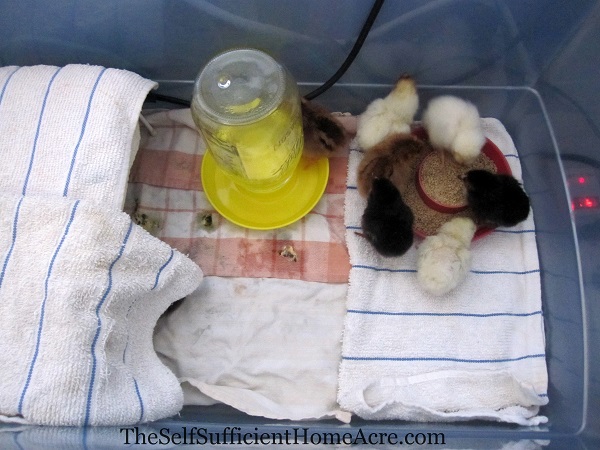
DIY – Redneck Brooder Box
If you need a quick way to keep your chicks warm and you have some seedling heat mats, you might want to try my Redneck Brooder Box. I’ve had very good luck using this system to keep chicks warm for the first few weeks of their lives. This works similarly to the Ecoglow brooder and may not provide enough heat in a cold barn.
As an Amazon Associate, I earn from qualifying purchases.
Food & Water
Provide food and water in clean containers. Water dishes must be shallow to prevent drowning. Change water daily.
Use room temperature water to prevent chilling the chicks and add a probiotic to it, such as 1 tsp of apple cider vinegar (ACV) to 1 quart of water, or try Sav-A-Chick probiotics and follow the instructions. After their first full day of drinking water with probiotics, you may add electrolytes to give them a boost of vitamins and energy. I’ve used Sav-A-Chick electrolytes or 1 drop of molasses to 1 quart of water and both worked well. Do not give them electrolytes with their first drink because this encourages pasty butt.
Food should be fresh for the best nutritional content. Make sure it is not moldy, rancid, or old.
Provide chick grit when you begin feeding the chicks treats or when you switch them over to grower feed at the age of 6 to 10 weeks, to help baby poultry digest their feed.
As an Amazon Associate, I earn from qualifying purchases.
Chicks – chick starter crumbles
Meat Chicks – meat producer feed
Ducklings – duckling feed or non-medicated chick starter crumbles (sprinkle with brewer’s yeast for supplemental vitamin E)
Turkeys – game bird feed or meat producer feed
As an Amazon Associate, I earn from qualifying purchases.
Set Up a Safe Brooder for Happy Chicks
It isn’t difficult to provide a safe, clean enclosure for your baby chicks, ducklings, and turkey poults and the benefits are numerous. Baby poultry in a healthy environment are lively, bright-eyed, and curious.
However, if their brooder becomes sodden with spilled water and feces, they are susceptible to disease. Too much, or not enough, heat can lead to death from hypothermia, overheating, or piling on top of each other.
As an Amazon Associate, I earn from qualifying purchases.
Give them ample space to regulate their temperature, fresh food, and clean water, and a non-slip surface with proper bedding…and they will reward you with a healthy flock!
If you have problems with baby poultry falling ill or sustaining injuries, please refer to my post How to Care for a Sick Chick.
Do you have a special brooder box set up? Share in the comments!

